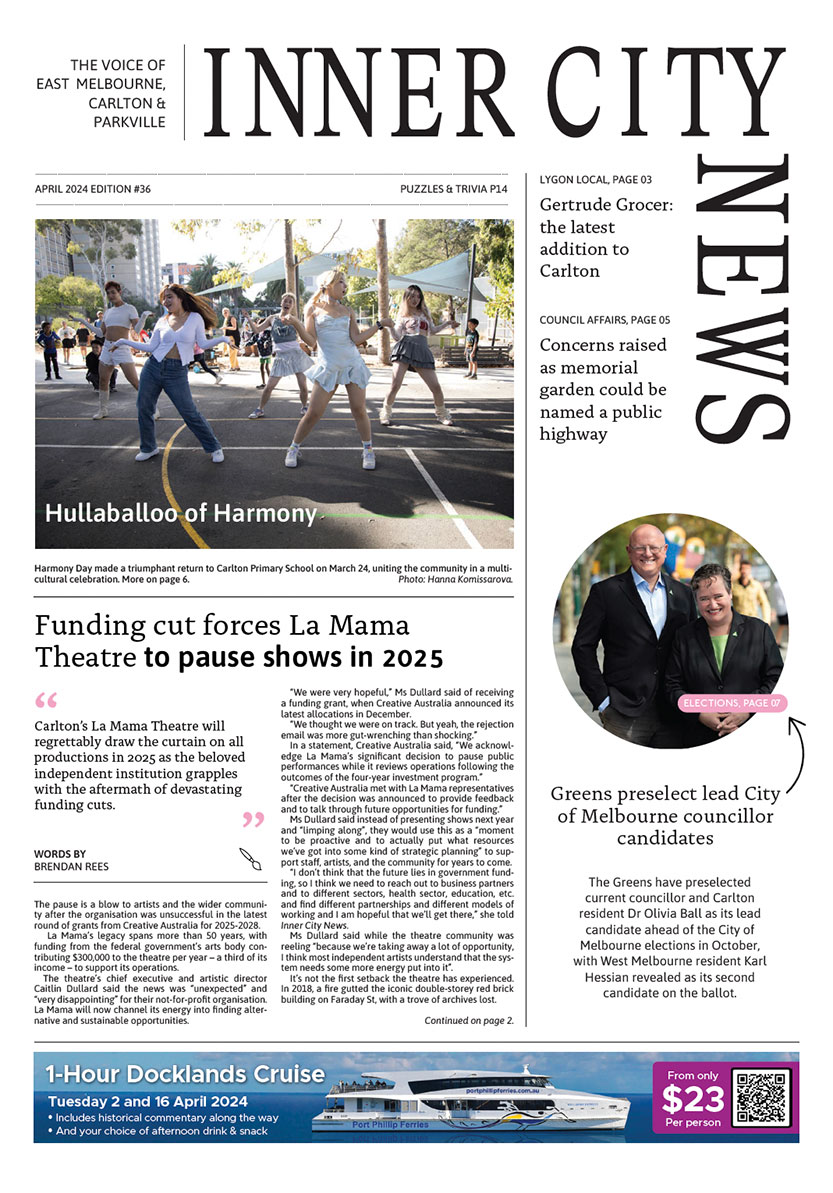Once-per-decade city strategy reveals strong local worker growth
Local worker numbers will steadily rise in the coming years, increasing by 50 per cent by 2040 according to a once-per-decade planning blueprint was released by the City of Melbourne in July.
The council’s Municipal Planning Strategy (MPS), last updated in 2010, indicates that workers will continue to increase despite the impact of COVID-19.
Numbers to 2040, when compared with 2020, would rise strongly in East Melbourne (16,016 to 23,051), Carlton (8407 to 12,796) and Parkville (9,611 to 14,715); a rise that would outstrip the rate of resident growth.
In City North, the number would double in this time as the council hoped it would become a “world class innovation district”.
The new MPS, an updated city vision that provided summaries of each neighbourhood within the municipality, focused strongly on Melbourne’s new growth areas.
While East Melbourne, Carlton and Parkville were noted as “well established” neighbourhoods that would undergo “subtle” rather than wholesale changes, other areas to the west would be transformed.
Industrial and former industrial areas such as Arden, Macaulay, and Fishermans Bend would “accommodate a significant portion of the growth and change in the municipality over the next 20 years” according to the strategy.
It is proposed these areas will become “the new Fitzroy or Collingwood for the west of the city”.
“The growth of the municipality is now moving west, onto the lower, wetter plains,” it stated.
“The urban renewal precincts of the city which are transforming from industrial areas to mixed use areas offer unparalleled opportunities to reimagine our future landscapes and built form.”
The MPS, which introduces policies that guide both land use and development decisions, did not contain any distinct revelations for local areas within the coming years.
“East Melbourne will be preserved and enhanced as a residential and mixed-use area with significant heritage buildings and gardens, heritage streetscapes, and government, medical and commercial uses that complement the central city,” the strategy stated.
“Carlton will grow as a high amenity residential and mixed-use area with well-preserved heritage residential streets, a vibrant Lygon St precinct and a growing education and innovation sector … [and] Parkville will be defined by its significant open spaces and key public assets, with clusters of heritage housing, residential development and a mix of medical, commercial, research and education uses.”
While not introducing an entirely new vision for the future of the city, the MPS rather consolidated the council’s already-endorsed policies (from recent years) related to planning matters, such as the Affordable Housing Strategy and the Transport Strategy 2030.
Planning chair Cr Nicholas Reece said it was a “once-in-a-decade opportunity to chart a course for what Melbourne will look like in the decades ahead.”
“We’re planning out to 2040,” Cr Reece said.
“Modern Melbourne, as we know it, is not just a city that happened by magic. It’s the result of very deliberate, and strategic, decision-making by the city and by the state. It’s the product of one good decision building on another.”
Cr Reece said that just like inner suburbs to the northeast of the CBD have markedly changed, so too will those to the west.
“Suburbs like West Melbourne will transition. They’ve got a strong industrial history — they’ll continue to be a place where a lot of people are employed but will also take on a much more residential character, becoming like the new Fitzroy or Collingwood for the west of the city.”
Deputy planning chair Cr Rohan Leppert said the strategy would play a hugely influential role in upcoming planning matters and meant that the “unholy friction” between local and state governments’ planning agendas could be managed.
“[That relationship] can be managed in a way that there’s some certainty and some understanding by all parties in the planning system, especially local residents of the City of Melbourne, as to what the government’s agenda is and why, and how these different pieces come together,” Cr Leppert said.
“If you think about how much the city has changed in the last 10 years, it’s that second role — not the ‘here’s our ambitious statement for the future’ — but how do we consolidate all of those policies and tell the clearest narrative that we possibly can about where development goes across the municipality and why.”
The council will now seek authorisation from the new Minister for Planning Lizzie Blandthorn before commencing public exhibition and will seek input from community members across the municipality.
“We’re expecting bouquets [but] we’re probably expecting brickbats as well — that’s the nature of community consultation and it’s so important that we get it on this exercise,” the Deputy Lord Mayor said. •

Carlton language school championed by Ukrainian refugee





 Download the Latest Edition
Download the Latest Edition